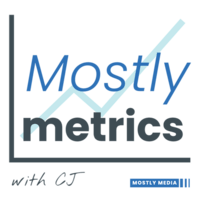👋 Hi, it’s CJ Gustafson and welcome to Mostly Metrics, my weekly newsletter where I unpack how the world’s best CFOs and business experts use metrics to make better decisions.

I have a confession to make. I suck at OKRs.
If you’re like me, you fall victim to treating OKRs as a check-the-box exercise, or failing to make them specific enough to support your true organizational goals.
Luckily for you (and me, lol) I know people who don’t suck at OKRs.
In fact, they’re seasoned pros when it comes to mastering Objectives and Key Results. Here’s a tactical (and extremely timely) guide to nailing OKRs for you to use in 2025. Don’t let your OKRs become a forgotten slide deck next year.
(Thanks to Bryan Morris, CFO at Demandbase, Paul Mulé, CFO at Arcadia, Daniel Kang, VP of Finance at Mercury, and Alyssa Shadinger, CFO at SiSense for their insights and appearances on the RTN Podcast.)
Our roadmap for getting OKRs right:
Limit OKRs to Essentials
Clearly Define Success
Focus on Incremental Impact
Avoid Vanity Metrics
Align, Don’t Cascade
Balance Aspirational vs Committed Goals
Establish a Cadence to Avoid the Midyear Fade
Use Finance as the Bridge Between Strategy and Execution
Set Dates for Accountability
Course-Correct with Confidence
1. Limit OKRs to Essentials
Overloading OKRs dilutes their focus and overwhelms teams. Set no more than 3–5 company-level objectives to maintain clarity and impact.
Key Tactics:
Keep OKRs concise to spotlight the most critical goals.
Focus on company-wide objectives that resonate across departments.
Push back against the temptation to set an exhaustive list of KRs.
From the Pros:
"If you focus on everything, you focus on nothing. Two to three OKRs are more than enough for most companies, especially smaller ones. It keeps everyone aligned and avoids wasting time on things that don’t move the needle.”
—Alyssa Shadinger, CFO at SiSense
“Where companies struggle is when OKRs become a vanity contest about how many they can set. Stick to what truly moves the needle.”
—Bryan Morris, CFO at Demandbase
2. Clearly Define Success
Subscribe to our premium content to read the rest.
Become a paying subscriber to get access to this post and other subscriber-only content.
UpgradeYour subscription unlocks:
- In-depth “how to” playbooks trusted by the most successful CFOs in the world
- Exclusive access to our private company financial benchmarks
- Support a writer sharing +30,000 hours of on-the-job insights

